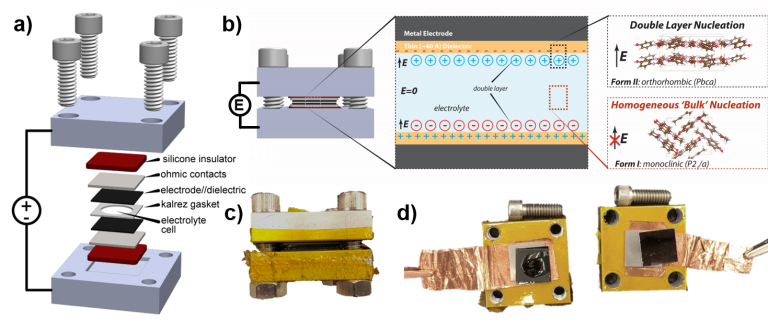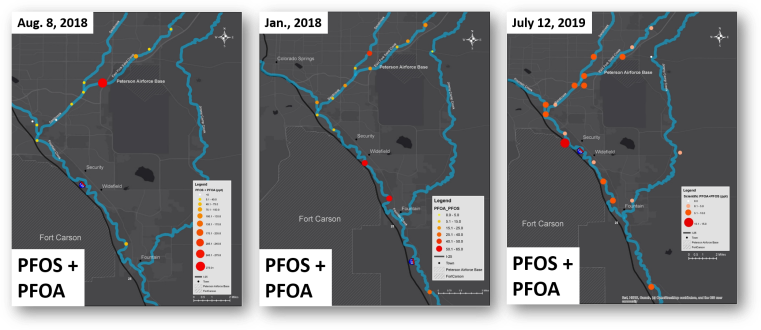Research

CURRENT PROJECTS
Molecular Crystallization within the Electrical Double Layer

Closed-Cell Bipolar Electrochemical Sensors
In low-resource settings, meeting the need for high-quality environmental chemical testing requires overcoming challenges of harsh transportation and storage conditions, non-technically trained users, limited infrastructure for support and maintenance, and an economy that cannot afford expensive solutions. We aim to develop and employ new bipolar electrochemical sensors for truly simple, open-source, high-quality, low-cost water quality diagnostics. The sensors combine aspects of conventional anodic stripping voltammetry, wireless bipolar electrochemistry, and light-emitting reactions to quantitate aqueous heavy metals in water. This project has thus far produced the first demonstration of a closed-cell BPE sensor utilizing a cathodic electrochemiluminescent reaction scheme for optical readout. With initial sensor development, a novel device fabrication technology based on simple laser ablation of commercial conductive glass substrates was also introduced. The current sensor transduction scheme has also been extended to include an all solid-state optical readout that provides performance metrics of sub-ppb detection limits, device precision (n = 10) of ~1%, and per sensor costs of less than $1. This work is generously supported by the Pittsburgh Society of Analytical Chemists UARP Award.
Nick, Jose, and Jero won $10k at the 2019 Innovation Institute Big Idea Competition. Watch their pitch here.

The Fountain Valley Water Project

Since 1970, the Peterson Air Force Base in Southeast Colorado Springs has dispensed an unknown volume of PFAS (poly- and perfluoroalkyl substance)-containing foam used in firefighting drills into the surrounding soil which leeched into the Widefield Aquifer, a key source of drinking water for the over 70,000 residents. PFAS (poly- and perfluoroalkyl substances) are a family of nearly 5000 human-made compounds which persist in most environments without breaking down. Their distinctive chemical structures make them especially useful in hydraulic fluids, in carpets and textiles, in firefighting foams, as well as in everyday products like Teflon pans, waterproof clothing, cosmetics, and oil-resistant food packaging.[1] The few epidemiological studies conducted thus far correlate long-term human exposure with kidney cancer, testicular cancer, and cognitive development issues. The Fountain Valley community is one of the largest known and worst affected populations in the US.[2] This project, started in 2017, puts forth a complementary community-centered citizen-science study of the fate and transport of a suite of PFAS compounds in the affected area. The project was highlighted in 2020 in the Colorado Sun.[3]
[1] Rich, N., The lawyer who became DuPont’s worst nightmare. The New York Times Magazine 2016, 6.
[2] Rodgers, J., Blood tests show southern El Paso County residents have high levels of toxic chemical from contaminated water. The Gazette 2018.
[3] Clark, M., Colorado lawmakers wanted to tackle state’s PFAS problem. They are take more of a baby step. Colorado Sun, Mar. 10, 2020.


